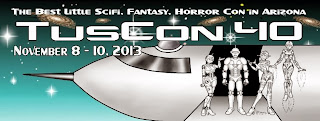 |
| Starry Starry Night by Shadoweddancer on deviantArt |
 |
| Starry Night by Vincent van Gogh |
There are many questions about van Gogh and his paintings. What was the source of the altered 'vision' that allowed for his striking art - was it genius, or a mix of that and something like an illness, affecting the way he painted? For example, it has been suggested that the swirls and halos in 'Starry Night' may have been a result of mental illness, toxins, epilepsy, or other factors. Was this curling, glowing world to some extent what he was really seeing?
When I think about fractals, I imagine that van Gogh was seeing far more accurately and 'realistically' than we might at first imagine.
As you know from my previous posts 'Art Imitates Life' and 'Fact, Fiction, and Fractals,' I am captivated by fractals and fractal art. In spite of years of formal math education, I am still amazed at how we have developed this tool (language) called math, that can describe the world both so comprehensively and so creatively. When we use math to describe nature we find systems and patterns repeating in strange ways, and yet they seem so recognizable to us, because they are all around and a part of our everyday experience.
Clouds and clusters of stars are both phenomena that share a certain fractal nature. They possess self-similar (same on all scales), repeating, complex patterns. Galactic gas and dust are distributed in a manner that is both self-similar and hierarchical. It is from this material that new stars are born, already clustered in ways that match the original fractal nature of the gas cloud. Investigating how the fractals change with time gives scientists insight into how stars are formed and how they evolve. [1] Clouds possess a wide variety of shapes and forms - bumps, curves, swirls, blobs, and filigree - that together form complex, repeating patterns. Some of these can be modeled very accurately with the right kind of mathematical fractal. Such models are then used to help both weather prediction and climate modeling. [2]
The fractal swirls in 'Shadoweddancer's' Starry Starry Night seem strangely familiar. Of course they bring to mind the piece of art that they honor, but they also reflect the subject of the painting - the night sky itself. After all, a mix of stars and clouds would have many intriguing fractal patterns laced within one another. As I look at this fractal art, I imagine I see stars and galaxies glowing through a patchy gauze of clouds. It is certainly a spectacular night, with clusters of stars and the band of our Milky Way galaxy flowing through the scene.
The similarity to 'Starry Night' is striking to me. It makes me imagine that van Gogh's painter's eye saw into the patterns of the evening sky and represented them in a way that only a fractal could really imitate. A stretch? Probably, but there is no denying the fractals found all around us, and the amazing works they inspire. I know it motivates me to look for more of the 'hidden fractals' that abound in our environment, both in nature and in art. And I will continue to imagine that the genius of some artists (and mathematicians) is the ability to see into the patterns of reality in ways that the rest of us overlook.
Image Credits and References:
Starry Starry Night appears with the generous permission of the artist, Shadoweddancer on deviantArt. "Van Gogh is one of my favorite artists. This is a tribute to his Starry Starry Night, which I think is one of his most recognizable works and my favorite."
Starry Night by Vincent van Gogh is from Wikimedia Commons, public domain.
[1] Sanchez and Alfaro, 2010, Galaxy Astrophysics, arXiv:1011.1374 [astro-ph.GA], Cornell University Library, http://arxiv.org/abs/1011.1374
[2] van den Heuvel et al. 2012, JGR Atmospheres, http://onlinelibrary.wiley.com/doi/10.1029/1999JD900972/abstract
























